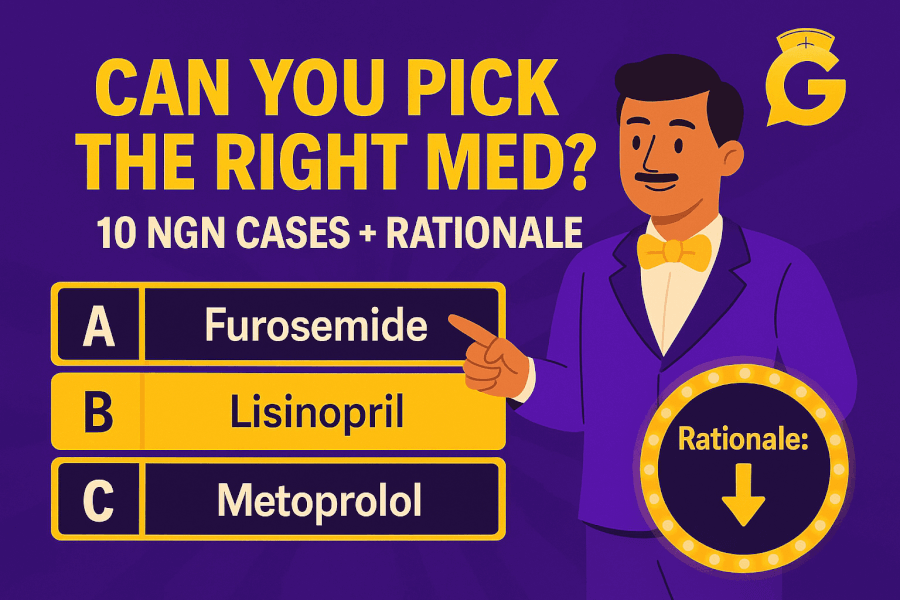Cardiovascular disorders are among the most critical health concerns nurses face, significantly affecting patient outcomes and quality of life. A deep understanding of pathophysiology, symptomatology, diagnostic criteria, and management options is imperative for nurses, especially for NCLEX preparation and real-world clinical practice.
Heart Failure
Heart Failure is a complex, chronic condition characterized by the heart's reduced capability to pump sufficient blood to meet the body's metabolic demands. There are two main types of heart failure: Left-sided and Right-sided.
Left-sided Heart Failure
Left-sided heart failure typically leads to pulmonary congestion as blood accumulates in the lungs due to inadequate left ventricular function.
Symptoms include:
- Shortness of breath, especially upon exertion
- Persistent cough with white or pink blood-tinged sputum
- Fatigue
- Difficulty lying flat (orthopnea)
Right-sided Heart Failure
Right-sided heart failure is often a consequence of left-sided heart failure or pulmonary diseases, leading to peripheral edema and organ congestion.
Symptoms include:
- Peripheral edema (swelling in ankles and legs)
- Abdominal swelling due to fluid accumulation
- Weight gain from fluid retention
- Hepatomegaly (enlarged liver)
Diagnostic Procedures
- B-type natriuretic peptide (BNP) blood test
- Chest X-rays
- Echocardiograms
- Electrocardiogram (ECG)
- Cardiac MRI or CT scans
💡 Many cardiac conditions are managed with medications—review your cardiovascular pharmacology to complement this disorders guide.
Management
- Lifestyle modifications: low-sodium diet, fluid restrictions
- Medications: ACE inhibitors, beta-blockers, diuretics, and angiotensin receptor blockers
- Surgical interventions: implantation of ventricular assist devices (VAD), heart transplants
Explore detailed insights on Congestive Heart Failure management and NCLEX Questions.
Hypertension
Hypertension, also known as high blood pressure, is often called the 'silent killer' due to its asymptomatic nature. Persistent hypertension can lead to severe cardiovascular complications such as myocardial infarction, stroke, and kidney failure.
Risk Factors:
- Obesity
- Sedentary lifestyle
- Excessive salt intake
- Alcohol consumption
- Genetic predisposition
Diagnostic Criteria
- Elevated systolic blood pressure ≥130 mmHg
- Elevated diastolic blood pressure ≥80 mmHg
Management
- Lifestyle modifications: diet (DASH diet), regular exercise, weight management, smoking cessation
- Pharmacological treatment: diuretics, ACE inhibitors, beta-blockers, calcium channel blockers
For more in-depth knowledge, refer to our guide on Pulmonary Hypertension.
Coronary Artery Disease (CAD)
Coronary Artery Disease involves the narrowing or blockage of coronary arteries due to plaque accumulation, significantly increasing the risk of heart attack and stroke.
Symptoms
- Angina (chest pain)
- Shortness of breath
- Fatigue
- Heart attack (myocardial infarction)
Diagnostic Procedures
- Stress tests (exercise tolerance test)
- Coronary angiography
- Advanced imaging: CT angiography
Management
- Lifestyle interventions: diet, physical activity, weight reduction
- Pharmacological treatment: statins, antiplatelet agents, beta-blockers
- Surgical interventions: angioplasty with stenting, coronary artery bypass grafting (CABG)
Gain further clarity on post-operative cardiac care with our detailed guide on Post-Operative Care.
Arrhythmias
Arrhythmias encompass irregularities in the heart's electrical conduction system, potentially resulting in inefficient blood circulation and increased cardiovascular risk.
Types and Symptoms
- Bradycardia (slow heart rate)
- Tachycardia (fast heart rate)
- Atrial fibrillation
- Symptoms: dizziness, palpitations, fatigue, syncope
Diagnostic Procedures
- Electrocardiogram (ECG)
- Holter monitor (continuous ECG monitoring)
- Event monitors
Management
- Pharmacological therapy: beta-blockers, antiarrhythmics
- Procedures: cardioversion, catheter ablation
- Devices: pacemakers, implantable cardioverter-defibrillators (ICDs)
Refine your ECG interpretation skills using our ECG Mnemonic Guide.
Peripheral Vascular Disease (PVD)
Peripheral Vascular Disease involves reduced circulation to peripheral body parts, especially the legs, due to vessel narrowing or blockage.
Symptoms
- Intermittent claudication (pain with walking)
- Numbness or tingling in legs
- Skin discoloration and ulcers
Diagnostic Procedures
- Ankle-brachial index (ABI)
- Doppler ultrasound
- Angiography
Management
- Lifestyle modifications
- Pharmacological therapy: antiplatelet agents, vasodilators
- Interventions: angioplasty, vascular surgery
Review more comprehensive management strategies with our guide on Fluid and Electrolytes.
Leveraging AI in Cardiovascular Nursing Education
Artificial intelligence is revolutionizing nursing education, offering personalized learning pathways and real-time assistance to nursing students preparing for the NCLEX and clinical practice. Discover the advantages of AI integration through our article How AI is Transforming Nursing Education.
Conclusion
Competence in managing cardiovascular disorders requires in-depth knowledge and practical application skills. Nurses play an essential role in patient education, preventive care, and therapeutic management. Ongoing education and practice refinement are key to excellent cardiovascular nursing care.
Consistently revisit these critical topics, prioritize self-care, and leverage innovative educational resources to excel in your nursing career and improve patient outcomes.







